
- Home
- Travel Packages
- Top Destination
-
Travel Attraction
By Category
Top Attraction

- Travel Agents
- Car Rentals
- Hotels
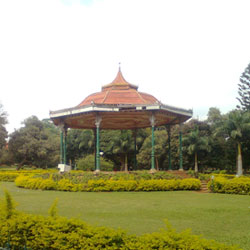
The Lal Bagh Botanical Gardens, laid out by Hyder Ali is located on the southern fringes of the city. It holds a number of flower shows, especially during the Republic Day (26th January). They have over 1000 species of flora. The Glass House, modeled on London's Crystal Palace, is the center of attraction. Hyder Ali laid out these famous botanical gardens and his son added horticultural wealth to them by importing trees and plants from several countries. This is a beautiful 2400-acre park. Of all the good that Hyder Ali and Tipu Sultan did, this must be the best. The Lalbagh Gardens were commissioned by the 18th century and over the years it acquired India first lawn-clock and the subcontinent largest collection of rare plants. The garden also has trees that are over 100 years old.
Explore More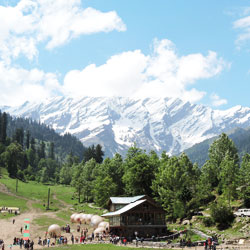
Solang Valley is a must visit tourist destination on your trip to Manali. The valley bestows splendid view of the snow draped peaks and suave glaciers. Solang Valley is located in the north western region of Manali, and is much acclaimed as the 'Snow Point'. The valley boasts of a magnificent temple devoted to the Hindu diety, Anjana Mahadeva, which witnesses the formation of ice shivling during winters. The trek to this temple in winters is so fabulous and mystical. The mountaineering institute in Manali offers ski lift for all enthusiasts, and it also houses a guest house and a hut. Adventures in Solang:- The valley has to its credit exciting sports like paragliding, parachuting, zorbing and skiing. The wild earth adventures involves night marching amid the guiding canopy of stars, making it an unforgettable experience. Paragliding: Paragliding is usually hosted during summer, and is a sport that can be tried by both, the novice and experienced. This is because it is fully done under the training of expert guides. Solang Valley provides the tourists a gripping experience to flutter in the sky and relish in the beauty of its surroundings. Skiing: Skiing is a fun activity that can be played by experienced and fresher, alike. There are trainers who will guide you throughout skiing. Zorbing: Apart from being famous for paragliding and skiing, Manali hosts zorbing during summers. A zorb is actually a combination of plastic balls; the inner can accommodate around 3 passengers and is tightly connected by ropes for ensuring safety. These inflated balls are best suited for grassy slopes.
Explore More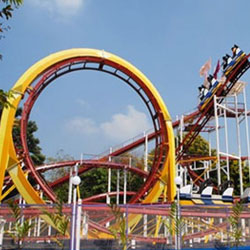
Essel World, the first and foremost amusement park is located on Gorai Island on 64 acres of green lands. It offers thrilling and scintillating rides and games. Essel World offers over 40 exciting rides, games, and attractions. The Water Kingdom is said to be the largest of its kind in Asia. This international-style theme park and amusement centre situated close to Gorai Beach is perfect for a one-day holiday. Special ferries get you across to the park and the entrance fee normally takes care of a fixed number of rides, which include the standard roller coaster and adventure themes, plus a water world section where kids can literally run amok. Summer is usually crowded, but the place also offers low budget monsoon packages and special deals on weekends.
Explore More
About 16 kms. from Shimla is the this hill famous for its trekking and hiking trails. It is also known for nature parks and picnic spots. It also has a Potato Research Station. It is famous for winter sports. This place is also full of lush green hills. The region around Shimla including Kufri was once a part of the Kingdom of Nepal. This region remained obscure from the rest of the world until the British discovered it in 1819.The British made Shimla their summer capital in 1864 and it remained so until 1939. As Shimla gained importance, Kufri also began to be recognized as an important place to visit. An annual winter sports festival is organized every year in the month of February in Kufri, when skiing enthusiasts and adventure seekers participate in this festival.There are plans to suspend tourist operations. If there is snow, the slopes are suitable for beginners and anyone with a decent plastic bag and a thick pair of trousers.
Explore More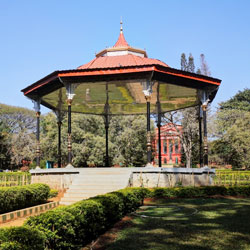
Laid out by Lieutenant General Sir Mark Cubbon this park is located near the Vidhan Soudha and has a number of neo-classical styled government buildings. Over 250 acres of this green park is a joggers and walkers delight. This wooded and be flowered park was laid out by Lord Cubbon, the then viceroy of India in the heart of the cantonment in 1864. Since then fairy fountains and an august bandstand have been added. But the most important aspect of Cubbon Park is its newer buildings that have brought it cultural wealth. No one would be surprised if one refers Bangalore as the garden city of India after have a walk at the Cubbon Park. On a grassy expanse in the centre of Bangalore is this park, planned and laid out by Sir Richard Sankey, the then Chief Engineer of Mysore. It is named after Sir Mark Cubbon, Bangalore's longest serving Commissioner. These are acres of land dedicated to trees, flowerbeds and rolling lawns: which means Cubbon Park has got its fair share of monuments: red-faced government buildings that house the Public Library, the Government Museum and the High Court.
Explore More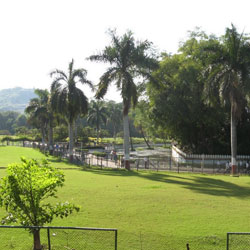
With pleasant lawns and the famous Ganesh temple built by Madhavrao Peshwa, Saras Baug is a popular evening spot in Pune. An exquisitely landscaped place with excellent well manicured lawns and well lit fountains, a recourse where one can relax especially during the evenings. Evening is the also the best time to visit this garden and have a taste of the cuisine available at the food stalls nearby if one gets hungry.
Explore More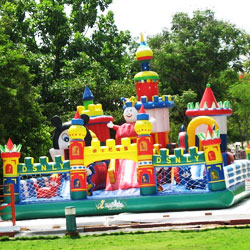
It is India's No. 1 Theme Park located about 28 Kms. south of Chennai at Tambaram. The attractions represent a wonderful blend of tomorrow's technology and all-time fantasies. Some hi-tech and exciting rides and attractions here, are space shuttle, wave pool, white water, flame ride and Kiddies Kingdom. Navodaya Mass Entertainment opened the amusement park. Navodaya is the seat of such rare talents and experimentation and research for excellence is the main pre-occupation.
Explore More
Victoria Peak, often referred to simply as "The Peak," is the highest point on Hong Kong Island, offering one of the most spectacular views of the city. It is an iconic destination for tourists and locals alike, known for its stunning vistas of Hong Kong's skyline, harbor, and surrounding islands. This landmark is an essential part of the Hong Kong experience, providing breathtaking views, historical significance, and a variety of activities for visitors to enjoy. How to Reach Victoria Peak, Hong Kong Getting to Victoria Peak is straightforward, with several transport options available. The most popular way to reach The Peak is by taking the famous Peak Tram, a historical and scenic tram ride that has been in operation since 1888. Peak Tram: The Peak Tram departs from the Peak Tram Lower Terminus in Central, Hong Kong. The tram ride takes about 7-8 minutes and ascends a steep incline, providing stunning views of the city as you make your way up. Once at the top, visitors are rewarded with incredible panoramic views. Tickets for the tram can be purchased at the tram station, and it is advisable to purchase tickets in advance, especially during peak seasons. Bus: For those looking for an alternative to the tram, several bus routes (such as Bus No. 15) run from Central to the Peak. The bus journey takes around 30 minutes and offers scenic views along the way. Taxi: Taxis are another convenient option. Although more expensive than public transport, taking a taxi directly to the top is comfortable and quick. Taxis can drop you off right near the Peak Galleria, where the main attractions are located. Walking: For the more adventurous, there are walking trails that lead to the Peak, offering a more immersive experience in the natural surroundings. The Hong Kong Trail is a popular choice for those who enjoy hiking. Weather at Victoria Peak, Hong Kong Victoria Peak enjoys a subtropical climate, with mild temperatures throughout the year. However, due to its elevation, the weather at The Peak is often cooler than in the city below, making it a refreshing escape, especially during the summer months. Here’s what you can expect throughout the year: Spring (March to May): Spring brings pleasant weather, with temperatures ranging from 18°C to 24°C (64°F to 75°F). The weather is mild, making it a great time for sightseeing and outdoor activities at The Peak. Summer (June to August): Summer in Hong Kong can be hot and humid, with temperatures reaching up to 31°C (88°F). However, the cooler temperatures at The Peak provide a comfortable break from the heat of the city. It’s also the season for occasional showers and thunderstorms, so it’s best to carry an umbrella. Autumn (September to November): Autumn is another excellent time to visit, with temperatures ranging from 23°C to 28°C (73°F to 82°F). The weather is sunny and dry, and the views from the Peak are at their best. Winter (December to February): Winter at The Peak is cool, with temperatures dropping to between 12°C and 17°C (54°F to 63°F). It rarely gets below 10°C (50°F), but it’s advisable to wear layers, especially in the evenings when temperatures can drop. Why Famous for Victoria Peak, Hong Kong? Victoria Peak is famous for several reasons, making it a must-visit landmark in Hong Kong. Here are the key factors that contribute to its popularity: Stunning Views: Victoria Peak offers the best panoramic views of Hong Kong’s iconic skyline, Victoria Harbour, and surrounding islands. The vista includes breathtaking cityscapes, the vibrant skyline, and the lush green hills surrounding the city. Visitors often come for the “Million Dollar View” — a view that’s considered one of the most spectacular in the world. Historical Significance: The Peak has been a prominent part of Hong Kong’s history, being the site of the British colonial governor's residence in the 19th century. It has since developed into a popular spot for both tourists and locals seeking respite from the hustle and bustle of the city below. Peak Tram: The Peak Tram, which has been in operation since 1888, is an iconic part of the Hong Kong experience. The tram provides a thrilling ride up the steep incline and offers unparalleled views along the way. The tram itself is a historical relic, adding a touch of nostalgia to the visit. Entry and Visit Details about Victoria Peak, Hong Kong Victoria Peak is open to visitors year-round, and there are no entry fees for the area itself. However, there are fees for certain attractions within the area, such as the Sky Terrace 428, which offers a 360-degree view from the top of the Peak Tower. Here are some important details to keep in mind when planning your visit: Opening Hours: The Peak is open to visitors at all times, though specific attractions such as the Peak Tram and Sky Terrace have set operating hours. The Peak Tram operates from 7:00 AM to 12:00 AM, and the Sky Terrace 428 is open from 10:00 AM to 10:00 PM daily. Sky Terrace 428: The Sky Terrace 428 is a must-visit for panoramic views. The entry fee for adults is around HKD 52 (USD 7), and children under 3 can visit for free. It’s recommended to buy tickets in advance, especially during peak tourist seasons. Peak Galleria: The Peak Galleria is a shopping and dining complex at the summit. It offers a range of shops, restaurants, and cafes with great views. Entry to the Galleria is free, though dining options can be expensive depending on the restaurant. Hiking Trails: There are several scenic hiking trails around The Peak, such as the Hong Kong Trail and Green Trail, which are free to access and ideal for nature lovers. These trails provide a peaceful alternative to the bustling city and offer incredible views of the surroundings. History and Architecture of Victoria Peak, Hong Kong Victoria Peak has been a prominent part of Hong Kong's history for over a century. During British colonial rule, the area was developed as a residential area for the British elite, with the Peak serving as the official residence for the colonial governor. Over time, the area became more accessible to the public, especially with the introduction of the Peak Tram in 1888, which connected the city below to the summit. The architecture around Victoria Peak is a mixture of modern and colonial styles. The Peak Tower, with its distinctive and futuristic design, is one of the most recognizable buildings at The Peak. It houses the Sky Terrace 428 and several shopping, dining, and entertainment facilities. The Peak Galleria, a more traditional-style building, offers additional retail and dining options. Things to Do at Victoria Peak, Hong Kong There are plenty of things to do when visiting Victoria Peak, making it a full day experience for tourists. Here are some of the most popular activities: Take a Peak Tram Ride: The Peak Tram ride itself is a thrilling and historic experience. The tram provides unique views of the steep slope and is an essential part of any visit to The Peak. Visit Sky Terrace 428: For panoramic views of Hong Kong, head to the Sky Terrace 428. The views are especially breathtaking at sunset or at night when the city lights up. Explore Hiking Trails: For nature enthusiasts, The Peak offers several walking and hiking trails that allow you to explore the lush greenery around Hong Kong Island. Shopping and Dining: At the Peak Galleria and Peak Tower, there are plenty of dining options and souvenir shops where you can enjoy local and international cuisine while enjoying the stunning views. Facts and Tips about Victoria Peak, Hong Kong Best Time to Visit: The best time to visit is during the cooler months of spring and autumn, when the weather is mild and the views are at their clearest. Wear Comfortable Shoes: If you plan to explore the hiking trails, wear comfortable shoes as the terrain can be uneven. Sunset Views: If possible, try to visit in the late afternoon for the stunning sunset views. The city’s skyline looks especially magical as the sun sets. Plan Ahead: The Peak is a popular tourist destination, so expect large crowds during weekends and holidays. Try to visit early in the morning or later in the evening to avoid the rush.
Explore More
One of the best places to witness the sunset in Ahmedabad is the Kankaria Lake. The polygonal lake (it has approx. 34 sides) with intricate sluice gates was created by the Sultans. It has an island garden, called Nagina wadi. The lake attracts good birdlife. Sultan Qutab-ud-din built this in 1451.
Explore More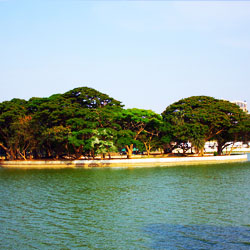
Kempe Gowda II constructed Ulsoor Lake during the second half of the second century. This 1.5 sq. km lake is dotted with islands, extending over an area of 125 acres. The picturesque lake is located on the Northeastern fringes of the city and is an ideal place for boating and shopping. A Ganesh festival is organised in August / September. It is a major tourist attraction with a boat club, where one can hire out cruises with stops at some of the tiny islands that dot the lake. A place of prominence in the early years of the century, the lake was then known as "Halsur" or "Alasur". It provides a welcome break from busy sightseeing and shopping. One can go for a swim in the nearby swimming pool that is part of the recreational complex near the lake. You can also go to the nearby Gurudwar, the largest Sikh shrine in Bangalore.
Explore More
Kandy Lake, also known as the *Kiri Muhuda* (meaning "The Sea of Milk"), is one of the most picturesque and tranquil landmarks in Kandy, Sri Lanka. Nestled in the heart of the historic city, this artificial lake is a serene oasis that reflects the beauty of Kandy’s rich cultural heritage. The lake, which stretches over 5 hectares, is surrounded by lush greenery and offers stunning views of the nearby hills. It serves as a popular spot for tourists, locals, and pilgrims alike, providing a peaceful setting for reflection, leisurely walks, or boat rides. With its historical significance and scenic beauty, Kandy Lake is truly one of the gems of Sri Lanka’s cultural landscape. How to Reach Kandy Lake, Kandy Kandy Lake is located right in the center of Kandy city, making it easily accessible for both locals and tourists. Here are the main ways to reach Kandy Lake: By Car: Kandy is well connected to other major cities in Sri Lanka, including Colombo. From Colombo, Kandy is about a 3-hour drive via the A1 highway. Once in Kandy, the lake is centrally located, and you can reach it in a few minutes by car. By Bus: Kandy has a central bus station, and buses from Colombo and other major towns run frequently. After arriving at the Kandy bus station, you can either walk to the lake or take a tuk-tuk, which is only a 5-minute ride. By Train: Kandy can also be accessed by train from Colombo. The Kandy railway station is located a short distance from the lake, and you can easily walk from the station to the lake within 10 minutes. Weather at Kandy Lake, Kandy The weather in Kandy is typically tropical, with a relatively mild climate due to its elevation. Here's what you can expect in terms of weather: Temperature: The temperature in Kandy ranges from 20°C to 30°C (68°F to 86°F), with cooler evenings and mornings, especially in the hill regions surrounding the lake. Best Time to Visit: The best time to visit Kandy Lake is during the dry season, which lasts from December to March. This period offers pleasant weather with clear skies and lower humidity. Rainy Season: The rainy season, from May to October, brings heavy monsoon rains, which can sometimes hinder outdoor activities. However, the lake and surrounding areas still offer a beautiful, lush atmosphere during this time. Timing of Kandy Lake, Kandy The lake is open to the public throughout the year and is accessible at all times of the day. However, the best times to visit are during daylight hours to enjoy the serene atmosphere and the beauty of the surroundings. Here's a suggested timeline: Best Time to Visit: 8:00 AM to 6:00 PM, when the weather is most favorable, and the lake is surrounded by sunlight, offering a more vibrant view. Evening Visits: If you wish to experience the lake in a different light, visiting in the late afternoon or evening can provide a peaceful and calming atmosphere as the sun sets over the water. Why is Kandy Lake, Kandy Famous? Kandy Lake is famous for its rich history, serene beauty, and central location within Kandy. It is historically significant for several reasons: Historical Significance: Kandy Lake was constructed in 1807 by King Sri Wickrama Rajasinghe, the last king of Kandy. The king built the lake to serve as a moat to protect the Temple of the Tooth Relic (Sri Dalada Maligawa), which is located right beside the lake. Scenic Beauty: The lake is surrounded by lush gardens and trees, creating a peaceful environment that is perfect for leisurely walks, boat rides, or simply sitting by the water and enjoying the view. Spiritual Importance: The lake plays a central role in the spiritual life of Kandy. It is located near the sacred Temple of the Tooth Relic, one of the most important Buddhist pilgrimage sites in Sri Lanka. The lake serves as a place of reflection and tranquility for the many pilgrims who visit the area. Entry and Visit Details About Kandy Lake, Kandy Visiting Kandy Lake is free, and the lake is open to everyone throughout the year. While there is no entry fee to visit the lake itself, you may need to pay for additional activities, such as boating or visiting nearby attractions. Here are some details for your visit: Entry Fee: No entry fee is required to visit the lake. However, if you plan to visit the Temple of the Tooth Relic or take a boat ride on the lake, there are separate fees for those activities. Boating: You can hire a small boat to take a relaxing ride on the lake. The boat rides typically last about 15-30 minutes and offer a unique perspective of the surroundings. Boat rides are usually available from 8:00 AM to 5:00 PM. Facilities: The area around the lake has several places where you can sit and enjoy the view. There are also some cafes and shops nearby where you can enjoy refreshments and buy souvenirs. History and Architecture of Kandy Lake Kandy Lake was constructed in 1807 by King Sri Wickrama Rajasinghe, and it was initially intended as a defensive moat to protect the sacred Temple of the Tooth Relic. The lake was designed to be an artificial reservoir, and it is about 5 hectares in size. The lake is built with a causeway along one side, which serves as a walking path. At the far end of the lake is a small island, which was once used as a summer retreat for the king. The architecture around Kandy Lake reflects the traditional Kandyan style of design, with beautiful stone walls and pathways. The calm waters of the lake are surrounded by lush greenery, creating an idyllic setting that enhances the spiritual and historical significance of the site. Things to Do at Kandy Lake Leisure Walks: Take a peaceful stroll around the lake on the causeway or the paths that surround it. This is the best way to enjoy the scenic beauty of the area and admire the lake from various angles. Boating: Enjoy a relaxing boat ride on the lake and take in the views of the Temple of the Tooth Relic and the surrounding hills. Boating is one of the most popular activities at Kandy Lake. Visit the Temple of the Tooth Relic: While you are at Kandy Lake, don’t miss the nearby Temple of the Tooth Relic, one of the holiest places for Buddhists in Sri Lanka. Photography: The lake offers many beautiful spots for photography. The combination of natural beauty, historical architecture, and spiritual landmarks makes Kandy Lake an excellent location for capturing memories. Interesting Facts About Kandy Lake The lake was initially built as a moat for the Temple of the Tooth Relic, one of the holiest Buddhist temples in Sri Lanka. The island in the lake was once home to a small pavilion used by the king as a retreat. Kandy Lake is a popular spot for pilgrims who come to visit the Temple of the Tooth Relic, as the lake is considered a sacred site in its own right. Despite being man-made, the lake has become an important part of the local ecosystem, with various species of birds and plants surrounding its shores. Tips for Visiting Kandy Lake Stay Hydrated: The weather in Kandy can be warm, especially in the afternoon. Bring a bottle of water with you to stay hydrated during your visit. Wear Comfortable Shoes: You’ll likely be walking around the lake and exploring the surrounding areas, so comfortable footwear is recommended. Take Photos: Kandy Lake and its surrounding beauty offer great photography opportunities. Don’t forget to bring a camera or smartphone to capture the scenery. Respect Local Customs: As the lake is near a sacred temple, be sure to maintain respect and follow the local customs and etiquette when visiting the area. Visit Early or Late: To avoid the midday heat and crowds, visiting the lake in the early morning or late afternoon will give you a more peaceful experience.
Explore More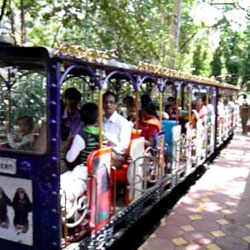
Bal Bhavan in Bangalore is a great amusement park and recreation centre. The place consists of small toy train inside the Cubbon Park that covers almost 3/4th miles of it, a Dolls Museum, a 20 million year old fossilized tree, boating facility, a fair ground and children’s park. The park is a favorite with kids as it has swings, tree houses and horse rides. Bal Bhavan is a great place for children as it hosts a lot of hobby classes comprising of painting, arts and crafts. The Vijayaranga Theatre located in Bal Bhavan is an attraction for children as many film shows and theater performances are conducted there. The place is a great attraction for kids.
Explore More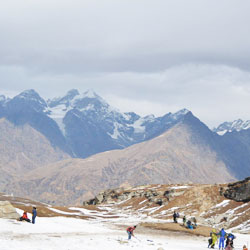
Rohtang Pass is a beautiful mountain pass situated on the eastern side of Himalayas. It links the Kullu Valley with Spiti and Lahaul Valleys of Himachal Pradesh. The pass hovers over the watershed between Beas and Chenab basins. On the extreme south of this pass, the Beas River flows southward and the Chandra River flows westward.Rohtang Pass is situated on a highway to Leh from Manali. The journey offers a spectacular and panoramic view of the lofty mountains. The pass is always open from the months of Jone to October annually. The best part about this pass is the scenic sight of glaciers, rivers and peaks. Marhi is an ideal haven for para gliders, as the wind here is mild and hardly changes all the time. The skyscraper tall peaks are usually draped in thick fog, and sometimes these mountains also witness cloudbursts. Rohtang Pass is always known for its unpredictable wind velocity and snowfalls. The place also has much in stock for the adventure freaks like mountain biking, skating and skiing. Be cautious as the density of oxygen starts lowering down at such altitudes. It is advised not to go all the way up if you suffer from chronic respiratory diseases like asthma and bronchitis.Most of the tourists who arrive at the pass prefer setting up tents by the roadside. Apart from camping facilities there are also plethora of river-side cottages, deluxe hotels, and luxury resorts. There is also the option of availing homestay that will allow you to relish in the beauty of nature and indulge in the culture of locals.
Explore More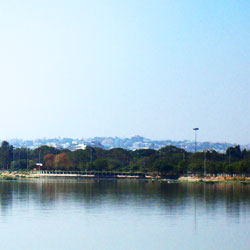
The 16 m deep lake was created in the mid 16th century by building a bund linking Hyderabad and Secunderabad and was named to mark the gratitude of Ibrahim Quli Qutb Shah to Hussain Shah Wali who helped him recover from his illness. The bund is a favourite promenade for the city dwellers. At the far end of the lake is the Nizamia Observatory. The 17.5 m high, 350 ton granite statue of Buddha was erected in the lake after years of successive disasters and finally inaugurated by the Dalai Lama in 1993. The tank, fed by streams originating from the Musi river, supplies drinking water to Hyderabad.
Explore More
Zoological Gardens is situated at Alipore Road, the horticultural garden houses the Zoo of Calcutta, with many wild animals in natural enclosures. It also has many varieties of birds and reptiles other than the interesting flora and fauna. To the south of the Maidan, Calcutta 16-hectare zoo was opened in 1875.Some of the animals are displayed in near natural environments, others in the pitiful conditions characteristic of Third World zoos. In 1873, the then Governor Sir Richard Temple proposed the formation of a zoo in Calcutta. Sir C.L. Lendal corroborated it. Finally, the Government allotted land for this purpose responding to the joint petition of The Asiatic Society and Agri-Horticultural Society. This is the largest zoo in India. It comprises several animals, birds and even creatures of rare species. It has a large collection of birds and mammals, and an enclosure for reptiles, including a tortoise that is much older than the zoo itself. During the winter season, the migratory birds flock in the zoo for its artificial lake and vegetation. Directly across the main zoo is an aquarium, with a variety of aquatic life from around the world.The Zoological Gardens, was established as a private, voluntary society. It is famous for its tigers. Special attractions are the white tiger, the tigon (a cross between a tiger and a lion) and the litigon (a cross between a lion and a tigon). It can take hours to go through all the sections. The campus also features a children's park and a cafeteria.
Explore More
The Malabar hill offers superb views of Mumbai. On top of the Malabar hills are the Hanging gardens and Kamala Nehru Park. Named after the wife of India's first Prime Minister Jawaharlal Nehru, from here one enjoys a magnificent view of Marine Drive, 'Queen's Necklace'. The park has a decent children's playground and the constant source of enjoyment is the gigantic 'Old Lady's Shoe' meant for children to play in.From the top of the shoe one can survey the entire garden. Another feature here is the lovely pavilion, which is surrounded by beautiful flowers and huge lawns. There is also a map of the city engraved in copper.
Explore More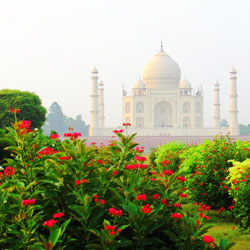
Introduction to Mehtab Bagh, Agra : The Mehtab Bagh in Agra is laid out in just right symmetry and alignment with the Taj Mahal and it was intentionally built as an integral part of the original design of the Taj Mahal during the period from 1631 to 1635 A.D.
Explore More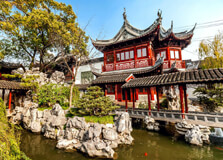
Located in the heart of Shanghai’s Old City, Yu Garden (Yuyuan Garden) is one of the most iconic classical Chinese gardens in the city. Known for its beautiful landscapes, traditional architecture, and peaceful ambiance, the garden offers visitors a glimpse into the rich cultural heritage of Shanghai. Spanning over 20,000 square meters, Yu Garden is a perfect blend of nature and art, showcasing ancient Chinese landscaping techniques, pavilions, ponds, rockeries, and bridges that date back to the Ming Dynasty. It is one of the best places to experience the tranquility of a traditional Chinese garden amidst the hustle and bustle of modern Shanghai. How to Reach Yu Garden, Shanghai Yu Garden is centrally located in the Old City area of Shanghai, making it easily accessible by public transport. Here’s how you can reach Yu Garden: By Metro: The nearest metro station is Yuyuan Garden Station, which is served by Line 10. It is just a short walk from the station to the garden entrance. The metro is one of the most convenient ways to reach the garden from other parts of the city. By Bus: Several bus routes pass through the Old City area, including Bus 930, 42, and 926. Look for stops near Yuyuan Garden or the City God Temple, which is located nearby. By Taxi: Taxis are easily available throughout the city. If you’re taking a taxi, simply tell the driver you want to go to Yu Garden or Yuyuan Garden, and they will know the way. Weather in Shanghai Shanghai has a humid subtropical climate, which means the weather can vary depending on the season. Here’s what you can expect when visiting Yu Garden: Spring (March to May): Spring is a pleasant time to visit, with temperatures ranging from 10°C to 20°C (50°F to 68°F). The weather is mild, and flowers begin to bloom, adding to the beauty of the garden. Summer (June to August): Summer in Shanghai is hot and humid, with temperatures often exceeding 30°C (86°F). This is also the rainy season, so it’s a good idea to bring an umbrella. Despite the heat, the garden offers plenty of shade and is still a great place to visit. Autumn (September to November): Autumn offers cooler and more comfortable weather, with temperatures between 15°C to 25°C (59°F to 77°F). The pleasant weather makes it an ideal time to explore the garden. Winter (December to February): Winter in Shanghai can be cold and damp, with temperatures ranging from 0°C to 8°C (32°F to 46°F). It rarely snows, but the chill can make walking around the garden a bit uncomfortable, so be sure to dress warmly. Timing to Visit Yu Garden, Shanghai The Yu Garden is open every day of the year, and its timing is consistent throughout the year. Here’s the schedule: Opening Hours: The garden is open daily from 8:30 AM to 5:30 PM, with the last entry at 5:00 PM. The garden can get busy, especially during weekends and holidays, so visiting earlier in the day is recommended to avoid large crowds. Best Time to Visit: For a more peaceful experience, it’s best to visit early in the morning or on weekdays when there are fewer visitors. The garden is particularly beautiful during spring and autumn when the flowers and trees are in full bloom or vibrant fall colors. Why Famous for Yu Garden, Shanghai? Yu Garden is famous for its stunning classical Chinese garden design and its historical significance. Here are a few reasons why it is one of the must-visit attractions in Shanghai: Historical Significance: The garden was originally built during the Ming Dynasty in 1559 by the wealthy official Pan Yunduan as a private garden for his family. It has since become a symbol of traditional Chinese landscaping and a cultural heritage site. Exquisite Landscaping: Yu Garden is known for its beautiful landscaping, including rockeries, ponds, pavilions, bridges, and ancient trees. The garden’s design follows the principles of Chinese feng shui and traditional garden aesthetics, creating a harmonious and tranquil environment. Architectural Beauty: The garden features traditional Chinese architecture, with ornate roofs, intricate carvings, and delicate decorations. The buildings blend seamlessly with the natural surroundings, providing a perfect representation of classical Chinese design. Cultural Importance: The garden is an essential part of Shanghai’s cultural identity and offers visitors a chance to experience the traditional beauty of Chinese gardens. It reflects the classical Chinese garden's philosophy of harmony between man, nature, and architecture. Entry and Visit Details about Yu Garden, Shanghai Visiting Yu Garden is an enriching experience, and there are a few details to know before you go: Admission: The standard entrance fee for Yu Garden is around 40 RMB per person. However, during peak times or special events, the ticket price may vary. Children, senior citizens, and students may be eligible for discounted entry. Facilities: The garden has various facilities for visitors, including rest areas, souvenir shops, and restaurants. You can buy souvenirs such as Chinese tea, artwork, and other traditional crafts. Accessibility: Yu Garden is accessible to people with disabilities, though there may be some areas that are difficult to navigate due to the garden's design, which features lots of steps and uneven paths. The main walkways and pavilions are wheelchair-friendly. History and Architecture of Yu Garden Yu Garden was constructed in 1559 by Pan Yunduan, an official of the Ming Dynasty, as a private garden for his family. Over the centuries, the garden has gone through several phases of restoration and preservation, especially after it was severely damaged during the Taiping Rebellion in the 19th century. The garden was eventually opened to the public in 1961 and has since become one of Shanghai’s most popular tourist destinations. Architecturally, Yu Garden is a prime example of classical Chinese garden design. The layout follows the traditional principles of feng shui, which aims to create harmony between humans and nature. The garden is divided into several sections, each with its own unique theme, including the Grand Rockery, the Hall of Spring, and the Lotus Pond. Traditional Chinese architectural elements such as curved roofs, wooden beams, and intricately carved windows are used throughout the garden’s pavilions and bridges, offering a stunning visual experience for visitors. Things to Do at Yu Garden Yu Garden offers a variety of things to do, from simply enjoying the peaceful surroundings to exploring the historical buildings and nearby attractions: Stroll Through the Gardens: Take a leisurely walk through the garden’s winding paths and discover its many scenic spots, such as the Lotus Pond and the Grand Rockery. Admire the Architecture: The garden features many beautiful pavilions, bridges, and halls, showcasing traditional Chinese architecture. Be sure to stop and admire the intricate details of the carvings and roof designs. Explore the Bazaar: Just outside the garden entrance is the Yuyuan Bazaar, a bustling market where you can shop for Chinese souvenirs, snacks, and traditional crafts. Visit the Teahouse: Stop by the traditional teahouse within the garden and enjoy a cup of Chinese tea while enjoying the beautiful surroundings. Facts About Yu Garden Yu Garden was built in 1559 during the Ming Dynasty by Pan Yunduan, a wealthy official. The garden covers an area of over 20,000 square meters and is divided into six main scenic areas. Yu Garden is a prime example of classical Chinese garden design, with a focus on harmony between architecture, nature, and water features. The garden has been open to the public since 1961 and is now one of Shanghai’s most popular tourist attractions. Tips for Visiting Yu Garden Arrive Early: To avoid crowds, it’s best to visit the garden early in the morning when it’s less crowded. Wear Comfortable Shoes: There are many steps and uneven paths throughout the garden, so comfortable footwear is recommended. Take Your Time: The garden is a peaceful place, so take your time to explore its many beautiful corners and enjoy the serene atmosphere. Bring an Umbrella: If you’re visiting during the summer, bring an umbrella to shield yourself from the sun or potential rain.
Explore More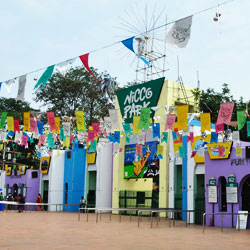
Nicco Park – Kolkata’s Premier Family Amusement Destination Spread across 40 acres in Sector IV, Salt Lake City (Bidhannagar), Nicco Park stands out as one of Eastern India’s most beloved theme parks. Launched on 13 October 1991, this "Disneyland of West Bengal" offers a perfect mix of thrill, family fun, and educational experiences Opening Hours Main Park: 10:30 AM – 6:45 PM (gates), 10:45 AM – 7:30 PM (rides) Food Court: Opens at 11:00 AM; closes by 8:00 PM Water Park (Wet-O-Wild): Entry between 10:30 AM – 5:00 PM; facilities until 6:00 PM Nicco Super Bowl (Bowling & Games): Weekdays from 1:00 PM – 9:00 PM; weekends till 10:00 PM Closed Only on Dol Yatra (Holi-related festival). History & Background Nicco Park was envisioned as a joint venture between Nicco Corporation and the West Bengal government, beginning in 1989 with technical help from Blackpool Leisure in the UK.Originally featuring 13 rides and an improved toy train from the former Jheel Meel Park, it quickly became a beloved destination. Today, it draws about 1.5 million visitors annually and boasts over 35 attractions. Entry Fees & Ticket Options Nicco Park offers several ticket packages to suit varying budgets and preferences: Ticket Type Price (INR) Coverage Entry Fee 500 Includes 15 specific rides/attractions Park’s Package 1,200 Unlimited rides in both Main Park & Water Park Bull Ride (Add-on) 50 Single ride addon Individual Rides 50–100 e.g., Sky Diver, Cable Car, Cyclone Wet-O-Wild (Water Park) 600 (adult)/ 450 (child) Single visit Beyond Enough Online Booking N/A Must be booked via official site/BookMyShow; non-refund or transferable Annual Pass 3,000 Unlimited access to park for a year; guest discounts included Attractions & Rides Nicco Park offers categories of rides to match all age groups: Thrill Rides: The Cyclone wooden roller coaster (55 ft tall, 750 m track) Flying Saucer, Water Coaster, and more Family Rides: Toy Train, Cable Car, River Caves, Paddle Boat, Lazy River, and Eiffel Tower replica Kids’ Corner: Family Carousel, Mirror Maze, Children’s Corner, Pirate Ship, Crazy Tea Party Educational Attractions: MIG-21 fighter aircraft from Bagdogra Airbase on display Water Park Features: Slides, wave pools, Aqua Drop, Aqua Curl, Thunder Bowl, Tornado Funnel, Lazy River (Wet-O-Wild) Entertainment & Add-ons: 7D theatre, bowling alley (Nicco Super Bowl), rain dance shows Environment & Learning: Solar Energy Village and greenhouse with educational displays. How to Book & Rules Tickets should be booked either through the official Nicco Parks website or trusted platforms like BookMyShowThese bookings are non-transferable and non-refundable, and same-day bookings are typically not accepted Upon booking, you'll receive an SMS/email confirmation—present it at the gate along with valid ID to collect your wristband Awards & Certifications Nicco Park is recognized for both quality and safety, being the first amusement park in India to obtain ISO 9001, ISO 14001, and OHSAS 18001 certifications. The Giant Cyclone received "Best Indigenously Manufactured Ride" and River Caves were awarded for innovation. It also notably holds the SA 8000 Social Accountability Certification Accessibility & Nearby Sites Located in Salt Lake City, Nicco Park is easily accessible by car, taxi, or bus. The nearby Nalban Boating Complex offers lovely boat rides on a lake—perfect for a peaceful follow-up to a fun day . While a Metro station named Nalban is under construction and expected operational by 2025 currently, the park is reachable via public buses or personal transport. Visitor Tips Arrive early (closer to opening) to avoid long queues and ensure a full-day experience. Bring or rent swimwear if planning to enjoy Wet-O-Wild Lockers, food courts (Bowler’s Den & Beach Café), and souvenir shops are available Check for ride availability if visiting during rain or holidays—some rides may close for safety Nicco Park is a stellar blend of exhilaration, education, and entertainment—all wrapped in a lush green space. Whether you are seeking family bonding, a day of thrills, or just a fun hangout, the park delivers. With seamless online booking, certified safety standards, and attractions for every age, it remains a top pick for a day out in Kolkata.
Explore More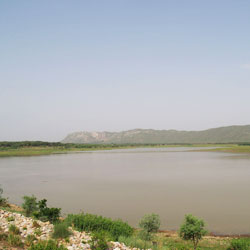
Once a popular picnic spot, Ramgarh Lake is a man-made lake located at a distance of 35 kilometers from the Jaipur City. The century old lake was cited as the highlight of the entire area once, but has scorched up due to the carelessness of the state. Ramgarh Lake’s claim to fame also comes from the fact that the rowing events in the 1982 Asian Games were held here. It also served as a hunting ground for the Maharajas of Jaipur at one time. Wildlife SanctuaryThe lake is surrounded by thick jungles that are home to wild life including Neelgai, Lions, Chitals etc. & was declared as a Wildlife Sanctuary in 1982. There is also the ruin of an old fort and Jambwa Mata Temple nearby that are visited by tourists.
Explore More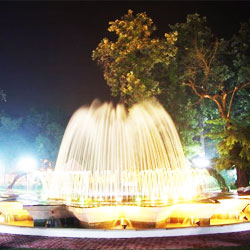
Introduction : The picturesque city of Kanpur is an important industrial center of Uttar Pradesh. The city is located on the banks of the river Ganga. Kanpur is the mecca for visitors who are interested in historical and religious places and monuments. There are thousands of tourists from every corner of the world who come to visit Kanpur every year. There are a number of eye catching places to look for in Kanpur. The tourist spots in Kanpur include Shri Radhakrishna Temple (J.K.Temple), Jain Glass Temple, Kanpur Memorial Church, Allen Forset Zoo, Jajmau, Nana Rao Park, Phool Bagh, Buddha Park, Moti Jheel Park, Kamla Retreat just to name a few. Amongst all these parks and tourist attraction spots the one that stands tall is the Phool Bagh, Kanpur. Phool Bagh, Kanpur is also known as 'Ganesh Udyan'. Phool Bagh is one of the most beautiful and exquisite parks which is situated in the heart of the picturesque city of Kanpur on the Mall Road. Description : The Ganesh Shanker Vidyarthi Memorial, located in the center of Phool Bagh in Kanpur in India, is usually used for the purpose pf public meetings. The flower shows that are organized locally every year are held here. The Phool Bagh, Uttar Pradesh possesses a large Public library and a Summer House. Phool Bagh is an extremely well maintained and well cared for park with various varieties of rare plants and trees. Phool Bagh, Kanpur is the perfect destination for any family outing as the Bagh provides the visitors with a serene and peaceful feeling.
Explore More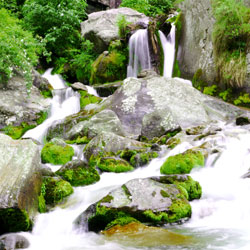
The Jogini waterfalls stream down to join the rapid rivers of Beas in the lower Kullu Valley. It is a sacramental place for the villagers of Manali, and is therefore considered as a Shakti Peeth. Jogini falls are located on the northern suburb of Vashisht Village. The waterfalls were initially the ritual bathing place of ‘joginis’ or daughters of Indra who abstained from marriage. A small shrine can be seen below the admirable falls. People from the villages pay visits to the temple to make their offerings. The temple surroundings are well kept and peaceful by the locals. At the time of special occasions, rituals are performed and special food is cooked. Jogini Devi is also known as ‘Fungni’ that is restricted to the valley of Kullu. Mahamaya Devi is the Sanskrit translation of Jogini which means ‘Goddess of great illusions’. The trek to the waterfalls is indeed a breathtaking experience with craggy paths and azure green brooks. The waters flow through an array of small hills, which is really worth relishing. On the way you can see a horde of shops and eateries that sell local delicacies like aata namkeen, rajma and kadi chawal. The Jogini waterfalls is bliss for photo fanatics and green panthers as it gives a good opportunity to marvel at the beauty of nature in its full glory. The perfect time to click pictures is at dusk and dawn, especially when the sunlight reflects on the pristine waters, knitting a mystical effect..
Explore More
Maharaja Ranjit Singh built this small palace and park in 1819. It lies in the newer, northern part of Amritsar. It used to serve as a summer residence for the philanthropic, one-eyed Maharaja (who rebuilt the Golden Temple) between 1818 and 1837 and now houses the Ranjit Singh museum, which has paintings and weapons dating back to the Mughal period. This beautiful garden is named as a tribute to Guru Ram Das, the founder of the city The museum contains weapons dating back to Mughal times and some portraits of the ruling houses of the Punjab and a replica of the diamond.
Explore More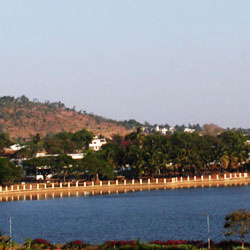
Unkal Lake is a pictorial water spot with a splendid view of sunset. This is an ideal picnic spot with a garden, boating facilities and other recreational facilities for children. The lake is located at a distance of 3 Kms from Hubli.
Explore More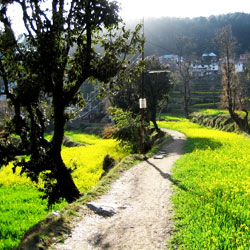
Just 11-km away from Dharamshala, located on the crest of a hill lies this attractive picnic spot, which presents a panoramic view of the Kangra valley, Dauladhar ranges and the Pong Dam. The village of Dharamkot once had a gallery of a well-known English painter A.W. Hallot. Today, its is a favourite picnic spot. Dharamkot is inhabited by the gaddies nestles amidst scenic beauty at 2100 metres above the sea level.Dharamkot also has the Vipassana meditation centre, Dhamma Shikara, as well as the Tushita Meditation Centre which is a centre for the study and practice of Buddhism in the Tibetan Mahayana tradition.
Explore More
Located at Jogeshwari, a fun park enveloped in 30 acres of lush green landscape Fantasy Land provides many entertainment rides for those with appetite for adventurous rides. It is another amusement park made up of modern mechanism games for children and adults like Essel World. It is also a venue for fun and games for visitors of all ages. Fantasy Land, a fun park within the city limits of Mumbai, The park opened to the public in September 1992 and has since grown from strength to strength adding new innovative entertainment and sporting attractions that have been one of their kind in India.
Explore More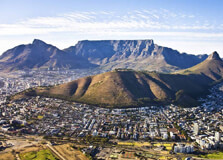
Table Mountain, one of the most iconic landmarks in South Africa, stands proudly over the city of Cape Town. With its flat-topped summit and steep cliffs, it is an instantly recognizable symbol of the city and has earned its place as one of the New7Wonders of Nature. Towering 1,085 meters (3,563 feet) above sea level, Table Mountain offers stunning panoramic views of the city, the surrounding beaches, and the ocean. It is a must-visit destination for tourists and locals alike, offering a unique combination of natural beauty, diverse flora and fauna, and rich history. Why is Table Mountain Famous? Table Mountain is famous for its breathtaking views and unique, flat-topped shape. The mountain has a rich geological history, formed around 600 million years ago during the formation of the Earth’s crust. Its summit, which resembles a large, flat table, has earned the mountain its name. Table Mountain is also known for its incredible biodiversity, being home to a vast number of plant species, some of which are found nowhere else on Earth. Aside from its natural beauty, Table Mountain is deeply ingrained in Cape Town’s history and culture. It serves as a focal point for the city and a prominent feature of the Cape Peninsula, drawing visitors from around the world who come to explore its hiking trails, ride the famous cableway, or simply enjoy the stunning views. It is also one of the world’s most photographed natural landmarks. How to Reach Table Mountain, Cape Town Table Mountain is located in the heart of Cape Town, easily accessible from the city center. Here are a few ways to reach this remarkable landmark: By Car If you are driving, Table Mountain is only a short distance from Cape Town's city center. The mountain is accessible via the Cableway Road, which leads to the lower cableway station. There is parking available at the lower station for visitors who are driving themselves. By Public Transport For those without a car, the MyCiTi bus service offers a convenient route to Table Mountain. The bus stops at the lower cable car station and is an affordable way to travel from the city to the mountain. You can also use taxis or ridesharing services like Uber, which are readily available in Cape Town. By Hiking For the more adventurous traveler, hiking to the summit of Table Mountain is a rewarding experience. There are several popular trails, including Platteklip Gorge, which is the most direct route to the top. Hikers can enjoy breathtaking views while challenging themselves with a steep ascent. However, this hike should only be attempted by those in good physical condition and with proper preparation. Weather at Table Mountain The weather on Table Mountain can be unpredictable, with frequent changes due to its unique location. The mountain is known for its “tablecloth” – a cloud formation that often blankets the summit, giving it the appearance of a tablecloth draped over the mountain. The weather can be quite different from the conditions in Cape Town itself, so visitors should always be prepared for temperature changes, especially in winter. Summers (December to February) are typically warm with temperatures ranging between 15°C to 25°C (59°F to 77°F). Winters (June to August) can be cooler, with temperatures ranging from 7°C to 15°C (45°F to 59°F). Rain is more common in the winter months, so it’s advisable to bring a jacket and be prepared for possible showers. Opening Hours and Timing Table Mountain is open year-round, but the Cableway operates with specific hours: Summer (October to March): 8:00 AM to 9:00 PM Winter (April to September): 8:00 AM to 6:00 PM The mountain's summit can be accessed during these times, but visitors should note that the Cableway may close temporarily due to weather conditions, especially in windy or stormy weather. Entry and Visit Details about Table Mountain To reach the summit of Table Mountain, visitors have two options: hiking or taking the Cableway. The Cableway is the most popular choice, offering a smooth and quick ride to the top. Tickets for the Cableway are available online or at the ticket office at the base of the mountain. Cableway Ticket Prices Adult (return): 360 ZAR Child (return): 180 ZAR Senior (return): 270 ZAR The prices vary for one-way tickets, with discounts available for South African residents. It is advisable to book tickets in advance during the high tourist season to avoid long queues. History and Architecture of Table Mountain Table Mountain has a long history that dates back millions of years. The mountain’s geological formation is attributed to ancient volcanic activity and erosion over time, creating its distinct flat top and steep cliffs. The mountain is made primarily of sandstone, with layers of granite forming the base. In the 19th century, the idea of creating a cableway to the summit was proposed, and in 1929, the first cableway system was built. It was later replaced in 1997 with the modern Table Mountain Aerial Cableway, which features rotating cabins that offer 360-degree views of the surroundings. Things to Do at Table Mountain Table Mountain offers a variety of activities for visitors to enjoy, including: 1. Cableway Ride The most popular activity at Table Mountain is taking the Cableway to the summit. The ride offers stunning views of Cape Town, the harbor, and the surrounding mountains. Visitors can enjoy the panoramic vistas from the top and take in the stunning beauty of the area. 2. Hiking For those who love adventure, hiking to the summit is a must. Popular trails like Platteklip Gorge and Skeleton Gorge offer challenging hikes that reward you with spectacular views of Cape Town from the top. 3. Scenic Views and Photography Table Mountain is one of the best places to take in the spectacular views of Cape Town, the coastline, and the nearby Robben Island. It is a great spot for photographers, with numerous viewpoints providing excellent opportunities to capture breathtaking photos. 4. Flora and Fauna The mountain is home to over 1,470 species of plants, many of which are endemic to the region. Visitors can explore the different ecosystems on the mountain, from fynbos vegetation to forests. It is also home to wildlife such as dassies (rock hyraxes), birds of prey, and various small mammals. Facts About Table Mountain Table Mountain is one of the oldest mountains in the world, estimated to be over 600 million years old. The mountain is a UNESCO World Heritage Site and a key part of the Cape Floristic Region. The “tablecloth” phenomenon occurs when cloud formations cover the summit, creating the iconic image of a table with a cloth over it. There are over 2,200 species of plants on Table Mountain, making it a biodiversity hotspot. Tips for Visiting Table Mountain Arrive Early: To avoid the crowds, try to visit early in the morning, especially during peak tourist seasons. Wear Comfortable Shoes: If you plan to hike, ensure that you wear sturdy footwear as some trails can be quite steep and rocky. Check the Weather: Weather conditions can change quickly on the mountain, so always check the forecast before your visit, especially if you plan to hike. Bring Water and Snacks: Staying hydrated is important, especially if you’re hiking. There are also limited facilities at the summit, so bring snacks if needed. Conclusion Table Mountain is a must-see destination for anyone visiting Cape Town. Whether you prefer to take the Cableway or hike to the summit, the mountain offers spectacular views, incredible biodiversity, and a rich history. It is a place of natural beauty and a central part of Cape Town's identity. A visit to Table Mountain is sure to be a highlight of any trip to South Africa.
Explore More
Niagara Falls is located in southern Ontario, Canada, and is easily accessible by car, bus, or air from various parts of Canada and the United States. The closest major city is Toronto, which is about 1.5 hours away by car (approximately 130 kilometers or 81 miles). If traveling by car, you can take the Queen Elizabeth Way (QEW) highway directly to Niagara Falls. For those coming from the U.S., the Rainbow Bridge connects Niagara Falls, Ontario, to Niagara Falls, New York. Visitors can also fly into the nearby John C. Munro Hamilton International Airport (about an hour's drive from Niagara Falls) or the Toronto Pearson International Airport, and then take a bus or rental car to the falls. Weather at Niagara Falls Niagara Falls experiences a continental climate with four distinct seasons. Summers (June to August) are warm, with average temperatures ranging from 20°C to 30°C (68°F to 86°F), making it a great time to visit the falls and enjoy outdoor activities. Spring (March to May) and fall (September to November) bring cooler temperatures, ranging from 10°C to 15°C (50°F to 59°F), and are ideal for avoiding the peak tourist crowds while still enjoying beautiful views of the falls. Winters (December to February) can be cold, with temperatures often below freezing, but the falls look magical when surrounded by snow and ice. Winter sports like ice skating and snowshoeing are also popular at this time of year. Timing of Visit to Niagara Falls Niagara Falls is a year-round destination, with each season offering unique experiences. The best time to visit depends on your preferences. The peak season is during the summer months (June to August), when all attractions are fully operational, and the weather is pleasant for outdoor activities. However, this is also the busiest time, so expect larger crowds. Spring and fall offer a more peaceful experience, with fewer tourists and beautiful scenery, especially during the fall foliage season. For those who want to see the falls in their winter wonderland form, winter is the perfect time. Keep in mind that some attractions, such as boat tours and certain parks, may have limited hours during the winter months. Why Is Niagara Falls Famous? Niagara Falls is one of the most famous natural attractions in the world, known for its stunning beauty and sheer power. The falls, located on the border between Canada and the U.S., are made up of three waterfalls: the Horseshoe Falls (on the Canadian side), the American Falls, and the Bridal Veil Falls. With a combined height of over 50 meters (165 feet) and a water flow rate of over 6 million cubic feet per minute, Niagara Falls is the largest waterfall in North America. It is a popular tourist destination, drawing millions of visitors annually who come to witness the spectacular views and to take part in various activities like boat tours, hiking, and more. Additionally, Niagara Falls has been a symbol of romance, with many couples visiting the falls for their honeymoons and weddings. Entry and Visit Details about Niagara Falls Niagara Falls is easily accessible to visitors, with multiple entry points and activities available on both the Canadian and American sides. On the Canadian side, the main attraction area is located along Niagara Parkway, where visitors can access several parks and observation points, including Queen Victoria Park and Table Rock. Entry to the park areas is free, and many attractions, such as the observation decks, offer spectacular views of the falls. For other activities, such as the Hornblower Niagara Cruise, Journey Behind the Falls, and Niagara SkyWheel, there is an entry fee. It’s recommended to purchase tickets in advance for certain attractions, especially during peak tourist season. History and Architecture of Niagara Falls Niagara Falls has a rich history that dates back thousands of years. The falls were formed over 12,000 years ago at the end of the last ice age when the glaciers melted and carved out the Great Lakes. Indigenous peoples, such as the Haudenosaunee (Iroquois) and Anishinaabe, have lived in the Niagara region for centuries, and the falls hold great cultural significance for them. European settlers arrived in the area in the 17th century, and the falls quickly became a popular site for exploration and settlement. In the 19th century, the area began to develop as a tourist destination, with the construction of roads, observation platforms, and hotels. The iconic architecture of Niagara Falls includes historic hotels like the Niagara Fallsview Casino Resort and the Skylon Tower, which offers panoramic views of the falls and the surrounding area. Things to Do in Niagara Falls There is no shortage of things to do in Niagara Falls, whether you’re interested in outdoor adventures, family activities, or relaxation. Some of the top things to do in the area include: Hornblower Niagara Cruise: This boat tour takes visitors right up to the base of the Horseshoe Falls, providing an unforgettable experience of the falls' thunderous roar and mist. Journey Behind the Falls: This attraction allows visitors to walk through tunnels behind the falls and experience the power of the water up close. Niagara SkyWheel: Take a ride on this giant Ferris wheel to get an aerial view of the falls and the surrounding area. Niagara Parks Butterfly Conservatory: A beautiful indoor garden filled with thousands of colorful butterflies, perfect for nature lovers. Niagara-on-the-Lake: A charming town just a short drive from Niagara Falls, known for its wineries, boutique shops, and historical sites. Hiking and Biking: Explore the many trails in the Niagara Gorge and Niagara Parks for stunning views of the falls and the surrounding landscapes. Casino Niagara: If you're feeling lucky, visit one of the area's popular casinos for some entertainment and games. Facts and Tips About Niagara Falls Here are some fun facts and helpful tips to make the most of your visit to Niagara Falls: Fun Fact: Approximately 6 million cubic feet of water flow over Niagara Falls every minute, making it one of the most powerful waterfalls in the world. Tip: Wear comfortable clothing and bring a raincoat or poncho if you're going on the Hornblower Niagara Cruise or Journey Behind the Falls, as you'll get wet from the mist! Fun Fact: Niagara Falls generates hydroelectric power, with several power plants located along the Niagara River. Tip: If you’re visiting during the summer, be sure to book your tickets for popular attractions in advance to avoid long lines and wait times. Fun Fact: The falls are beautifully illuminated at night, and there are fireworks shows in the summer months that offer a spectacular view of the falls lit up in vibrant colors. Tip: Visit both the American and Canadian sides of the falls for different perspectives. The Canadian side offers the best views of the Horseshoe Falls, while the American side provides a closer look at the American Falls.
Explore More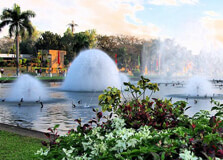
Rizal Park is a historical urban park. It is reckoned as the Asia’s largest urban park and also called Luneta Park. The park is situated along Roxas Boulevard, City of Manila, Philippines. It can be located adjacent to Intramuros. The park is visited by many on weekends and national holidays. History The land on which the park is straddled was the location of a town called Nuevo Barrio. During 1762 to 1764, the town was ruined by British, and the location came to be known as Bagumbayan Field. In 1995, Luneta was declared a national park after President Ramon Magsaysay signed Proclamation No. 234. Park Sections · Northeastern Section: It includes the 16-hectare (40-acre) Teodora F. Valencia Circle adjoining Taft Avenue. · Central Section: It is a 22-hectare (54-acre) park and extends down to Roxas Boulevard. · Southwestern Section: It comprises of Burnham Green, a 10-hectare (25-acre) open field, Manila Ocean Park along Manila Bay and the Quirino Grandstand. Recent Events in Park · In January 18 2015, the largest papal gathering was held here. · The Million People March was organized in the park in August 22–26, 2013. · Pentecostal Missionary Church of Christ (4th Watch) organized International Missionary Day at Quirino Grandstand in January 17, 2010 in the park.
Explore More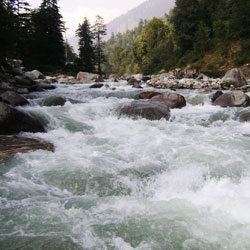
About 16 kms from Manali at the start of the climb to the Rohtang Pass, are the beautiful Rahala Falls at an altitude of 2,501 m. The picturesque Rahala Falls is a result of spilling water from steep rocks and melting glaciers. It provides an excellent view of the nature around. The entire area is also characterised by the forest of deodar, silver birch trees and fresh and aromatic air.
Explore More